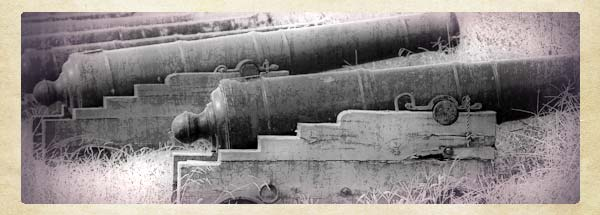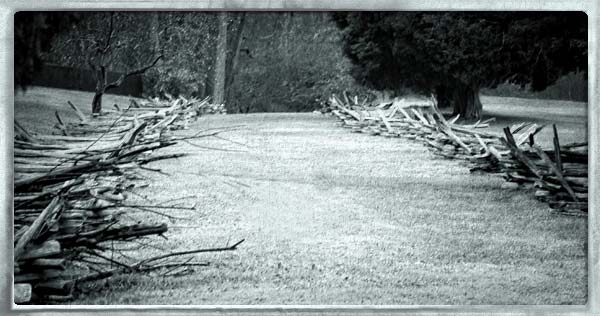
Ohio and the War of 1812
Ohio played an important role like many areas of the country. Ohio was western front and thwarted attempts by united British and Native American forces to seize northwest Ohio and important ports along Lake Erie's southern shore.
Like many Americans Ohioans initially thought this would be a quick and decisive battle with little threat to their own safety. There was a strong military presence in Ohio. William Hull had been appointed Brigadier General of the new Army of the Northwest that would protect Ohio from any British invasion from the north.
Having Hull take command of this newly formed army may have eased a few of Ohio's citizens, but most had seen or new of someone that had fallen prey to random attacks by painted Indians. In Franklin, new arrivals from the east were afraid to leave their homes because they had heard the war hoops coming from the nearby woods.
From central Ohio north to the lake citizens were terrified of the Native Americas that had become somewhat united and vowed to take their revenge against any Americans they could find. While the British supported these efforts in material supplies, they didn't condone such acts of violence.
The federal government felt confident in the outcome of this ill fated war. Discussions and serious war planning had been going on Washington since the beginning of 1812. Execution of the plan would prove difficult. However, by the time the war came to a bloody end, Ohio, which had officially became a state 9 years before the start of the war, would become a new destination for settlers. Roads developed by the war machine, would be used by farmers and commerce. The American Indians that had maintained control over northwest Ohio, were no longer a force. Those that sided with the British were forced onto reservations, that would eventually be moved further west across the Mississippi River.

Leading up to the War of 1812
Long before June 18, 1812 when war was officially declared, a number of unsettling events had been stewing between Great Britain and the United States. Even before the United States had won her freedom, the seeds had been planted In 1781 when American forces combined with the French navy and army forces outwitted the British, trapping a large number of their army and their southern commander, Lord Cornwallis in the little seaport town of Yorktown. Cornwallis was forced to surrender and two years later to the British surrender. There were exceptions to this surrender however.

ABOVE: Surrender field at Yorktown, Virginia where Great Britain's southern command surrendered to George Washington and the French Army in 1781. That would become the last major battle of the American Revolutionary War on the the east coast.
With the Treaty of Paris in 1783, the newly formed United States of American would gain all of the land east of the Mississippi River and roughly south of the St. Lawrence River. Britain would retain the land north of Lake Erie and the St. Lawrence. France would retain possession of the land west of the Mississippi River. Navigation on the Mississippi River from its source to the Gulf of Mexico would forever remain free and open to both Great Britain and the United States. Native Americans that sided with the British against the Americans were left with nothing. In fact they weren't even mentioned in the treaty.
The Treaty of Paris brought a temporary peace and withdrawal of British forces from the American colonies. British subjects remaining loyal to the Crown were allowed to remain in the United States and given 12 months to seek return of seized property or restitution for property destroyed during the war because they remained loyal to the Crown. They also were given the option of moving to England, north to Canada, or, in some cases where their homes and land had been taken by the Americans, they would eventually be given land in the Northwest Territory just south of Lake Erie, a strip of land called the "Fire Sufferers Land" or later just the "Firelands" because it was a stretch of land designated as repayment to Connecticut families that "suffered" when the British destroyed them during the Revolutionary War.

An uneasy peace
While the treaty brought an official end of conflict, it did little to settle unresolved problems. A great number of English were unhappy about the outcome of the war. They felt the revolt had been mismanaged and poorly executed. How could a poorly trained, poorly supplied army on the verge of collapse, almost from the beginning, and certainly towards the end, come out victorious over the best trained army in the world?
Cornwallis' defeat at Yorktown was as much to do with luck, or as some might suggest, Divine Intervention in the outcome. If only a sudden storm hadn't come up and destroyed many of Cornwallis' ships he needed to cross the York River and escape the siege. If only Lord Clinton hadn't delayed sending reinforcements by 5 days. If only Cornwallis hadn't given up his best defensive positions surrounding Yorktown almost without a fight. If only George Washington had decided to attack New York instead of moving south to Virginia. These were the questions being asked back in England as they became aware of the circumstances years after they occurred. Putting down the American revolt was within their grasp, if they had only...
Native Americans after the Revolution
Most people forget that the Revolutionary War was also being fought along the western frontier in the Ohio Territory. In these battles, Native Americans mostly sided with the British. The battle at Fort Laurens was one engagement during the early years of the conflict and just before the end of the war, American Colonel Crawford was captured along the Olentangy River after a battle against both Native Americans and British forces. Crawford was tortured and burned alive because of his part in the massacre of group of Native Americans earlier in the year.
After the war and the Treaty of Paris Native Americans learned they had been completely ignored by both sides. For some of the Nations, hatred against the United States only intensified. For some of the Nations their bitterness was directed at Great Britain for ignoring their contribution to the fighting. These feelings would create much strife within the Native Americans and would become a major factor in Ohio a few years later.
At the end of the Revolution, the United States was broke. There was not enough money to pay any bills, including pay that had been promised to the army's officers. Instead they were given plots of land in Ohio. Few officers actually took possession, but instead sold their claims to eager settlers looking for a new opportunity. This brought on a flood of pioneers moving into the the rich Ohio valley, exactly where many Native Americans called home.
It didn't take long for misunderstandings between the Native Americans and settlers to result in armed conflicts that continued to escalate over the years. Pleas from the settlers for the United States to bring order to the area resulted in numerous military expeditions that ultimately led to defeat for the Native Americans and them signing away most of their claims to Ohio except for the northwest corner of the state. It was a treaty that would quickly be broken by both sides.
Next: Ohio and the War of 1812>>


